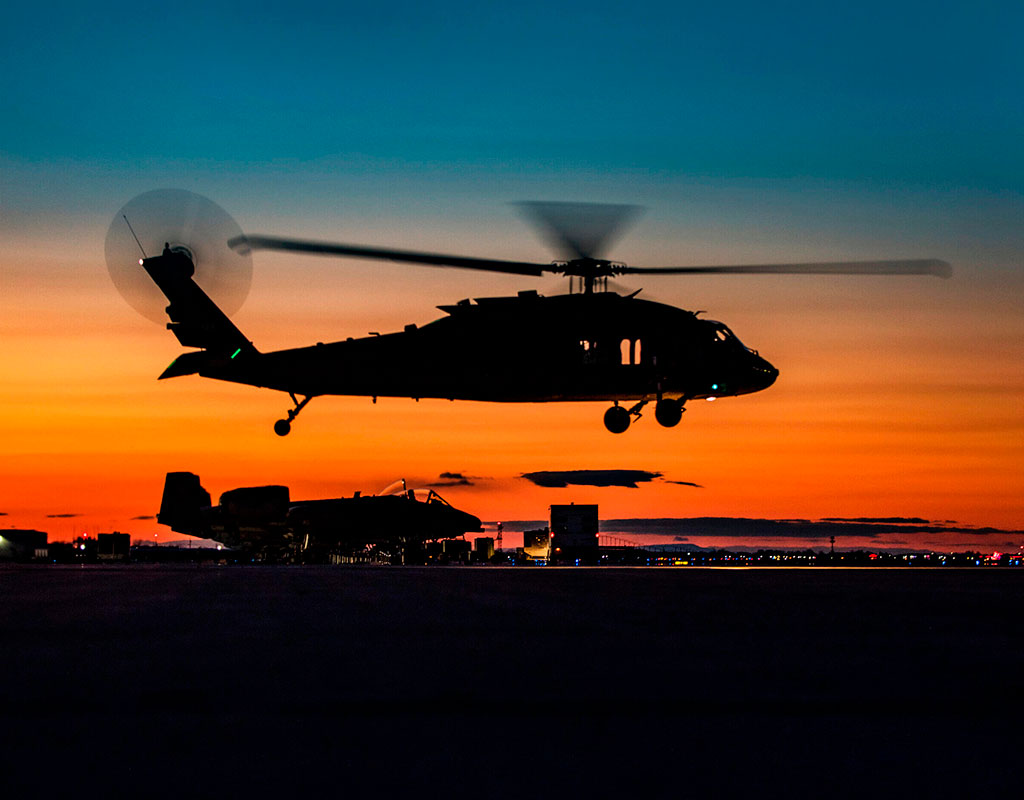
The U.S. Army and Air Force should develop comprehensive strategies to ensure that National Guard helicopter pilots receive the training and flight hours they need to be safe, according to a new report from the Government Accountability Office (GAO).
The report, published April 12, was prompted by a series of non-combat National Guard helicopter accidents that drew the attention of Congress two years ago. From fiscal years 2012 to 2021, Army and Air National Guard units recorded 45 serious helicopter accidents — resulting in the deaths of 28 National Guard personnel — and nearly 300 accidents overall.
According to the GAO, most of the accidents were linked to human error, as is typically the case for aviation accidents. Individual failures and pilot inexperience, including lack of proficiency, were consistently identified as factors that contributed to the mishaps.
The report highlights the extent to which many National Guard helicopter pilots fail to meet their flight hour goals due to aircrew availability, maintenance issues, and simulator access — problems that the Army and Air Force have previously identified but failed to fully address.
The GAO found that from fiscal years 2017 to 2021, Army National Guard helicopter pilots on average failed to meet their proficiency goal of flying nine hours per month, although Lakota helicopter pilots generally fared better than their peers in the Apache, Black Hawk, and Chinook helicopter pilot communities. In some years, average pilot flight hours in these communities also fell below the minimum flight hour goal of around seven hours per month.
Over the same time period, average pilot flight hours at the New York and California Air National Guard rescue helicopter squadrons sometimes failed to reach the “basic mission capable” goal of just six hours per month. While the nation’s third squadron, in Alaska, consistently cleared that bar, none of the three squadrons came close to the “combat mission ready” goal of 12.5 hours of flying per month.
According to the report, one of the challenges that hindered the ability of helicopter pilots to meet their flight hour goals is the part-time role of many Army and Air National Guard aircrew. During the 2017 to 2021 time period, part-time pilots flew, on average, between 2.7 and 9.8 hours less per month than did their full-time counterparts at the same locations.
Officials told the GAO that several factors contributed to the discrepancy, including balancing flying with full-time employment, a shortage of funding needed to give part-time pilots more flight hours, and maintenance and parts availability challenges that are harder for part-time pilots to work around.
Maintenance personnel shortfalls that impacted aircraft availability were identified as a key challenge for National Guard helicopter units, with Army National Guard officials pointing out that funding for maintenance personnel was less than half of what was needed based on flight hour funding. Meanwhile, a 2019 maintenance staffing study identified the need for 43 additional maintenance positions across the New York and California Air National Guard units, yet by June 2022, only 17 maintenance personnel had been added to those units.
The lack of on-site simulators, which are essential for training some emergency procedures, were another barrier to meeting pilot training goals. None of the three Air National Guard helicopter rescue squadrons have on-site simulators, and only some Army National Guard units do. While pilots at one Army National Guard facility with an on-site simulator averaged over 32 hours of sim time per year, some pilots who had to travel to simulators at other locations logged less than half that amount.
The GAO noted that the Army and Air Force have not fully implemented some previous recommendations related to meeting flight hour goals. For example, a 2020 report from the National Commission on Military Aviation Safety recommended reducing the administrative burden on pilots by providing aviation units with personnel who can carry out tasks such as flight scheduling. Although the Air Force active component implemented this recommendation by hiring contractors, Air National Guard units were not included in the contract.
The GAO recommended that both the Army and the Air Force develop “a comprehensive strategy that includes goals, priorities, and performance measures to address the challenges that hinder . . . National Guard helicopter pilot training.”
The GAO also wants to see the Army establish a system for better tracking the status of recommendations resulting from accident investigations, and conduct in-flight standardization evaluations of Army National Guard helicopter aircrews on a regular basis. Both the Army and the Air Force should also ensure that operational risk management worksheets are continuously updated to reflect relevant safety information, the GAO said.
Additional recommendations were that both service branches should assess the resource and workload allocations of safety personnel to determine whether helicopter units are appropriately staffed. Safety officers who spoke with GAO auditors said the role is typically part-time and balanced with other duties that leave them with little time for proactive safety activities.
Notably, despite recording 40 serious helicopter accidents from 2012 through 2021, the Army National Guard had a lower helicopter accident rate across all mishap classes than did the active Army during the same time period. When it came to the most severe “Class A” mishaps — involving fatalities or destruction of the aircraft — the Army National Guard recorded 0.9 accidents per 100,000 flight hours, compared with 1.7 for the active Army.
That relationship was flipped for the active Air Force and Air National Guard. Because of their lower total number of flying hours, however, the GAO was not able to draw statistically meaningful conclusions about their accident rates.

